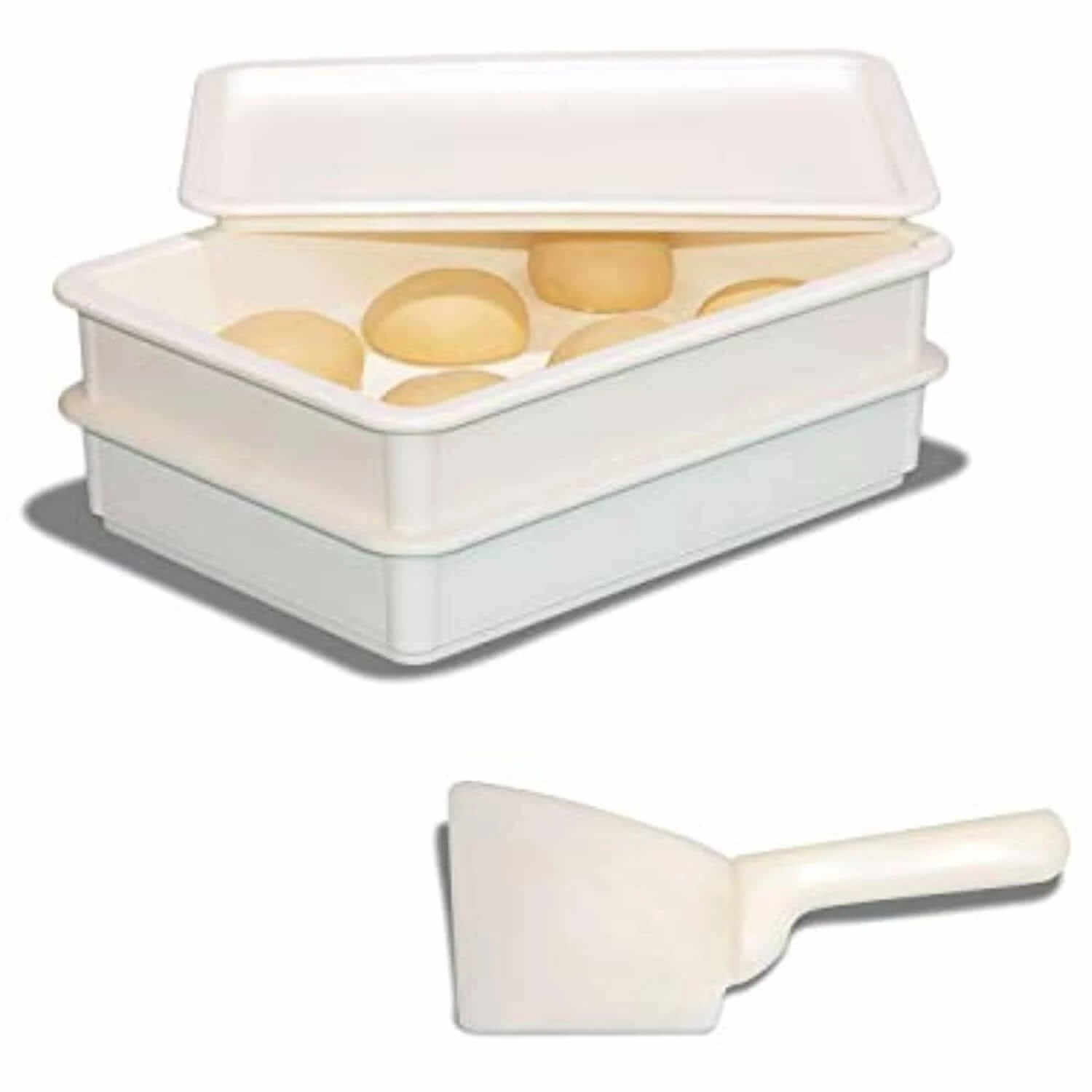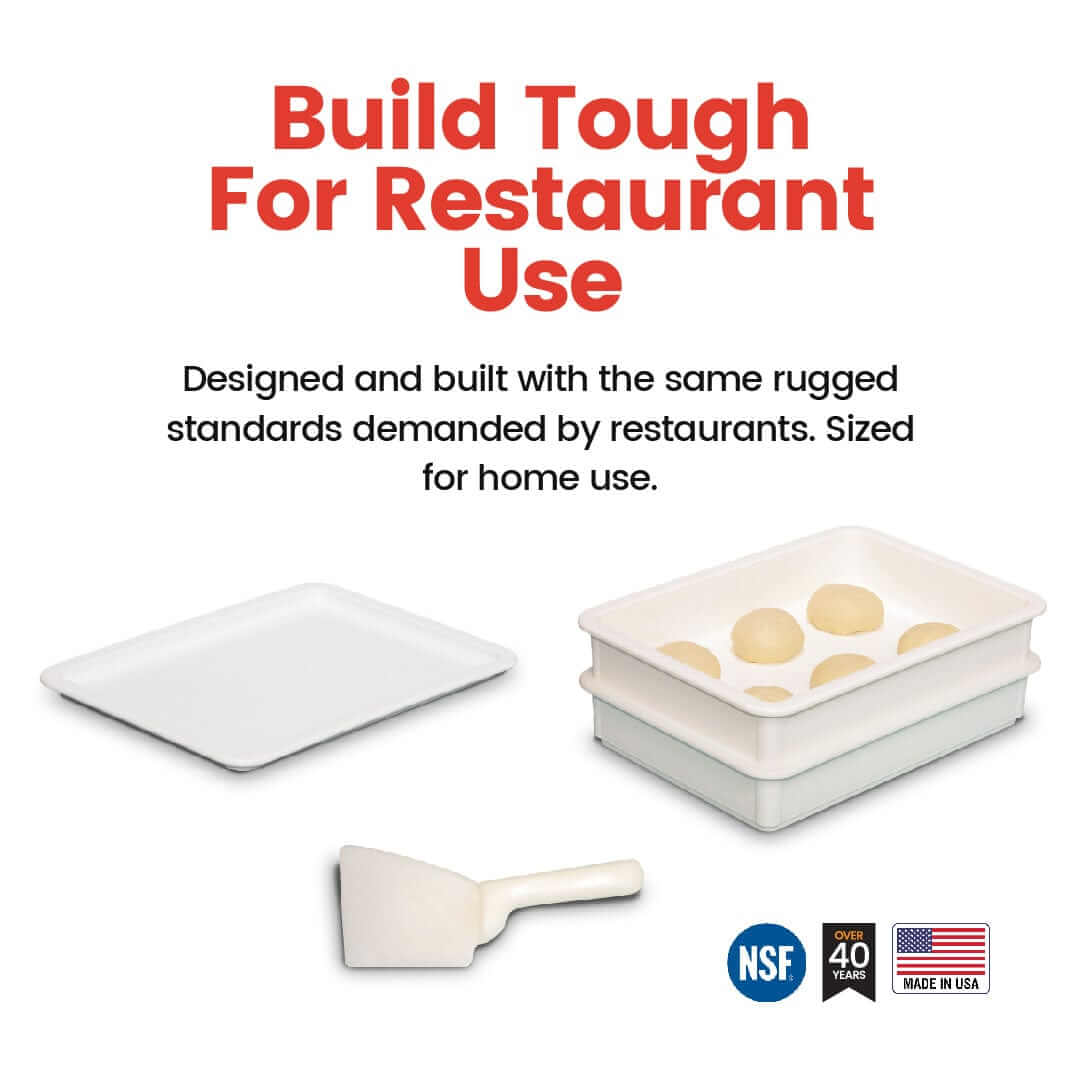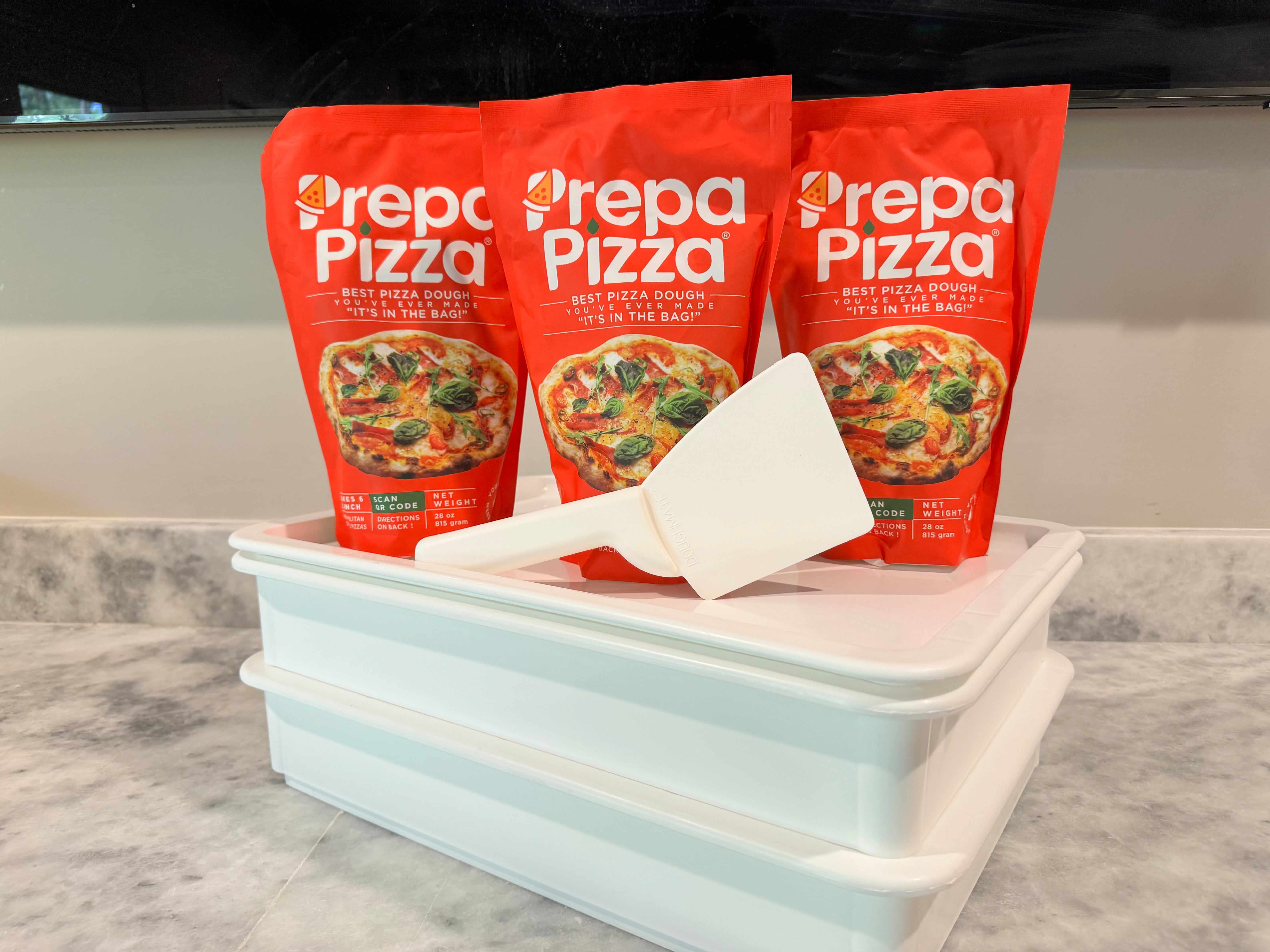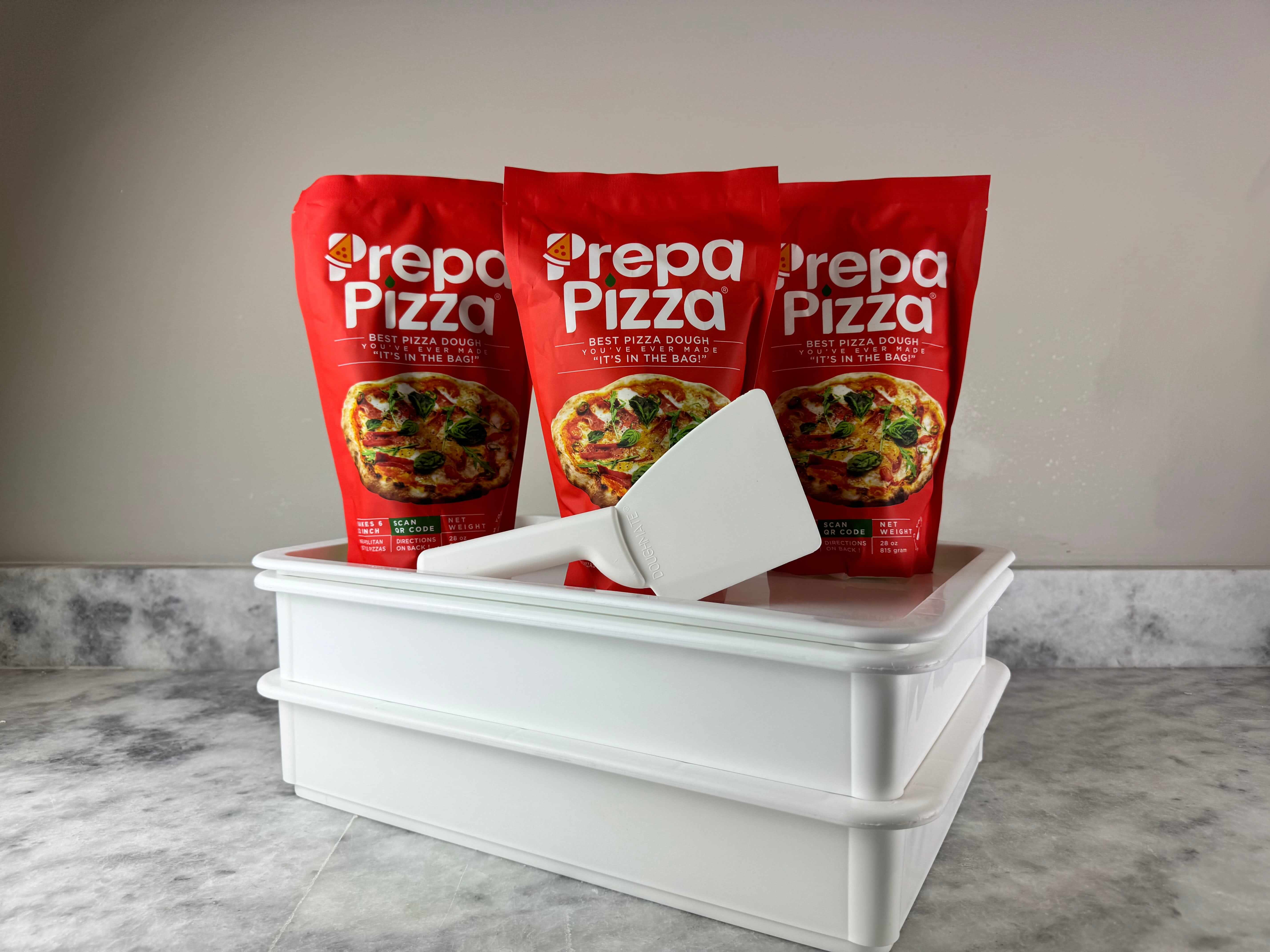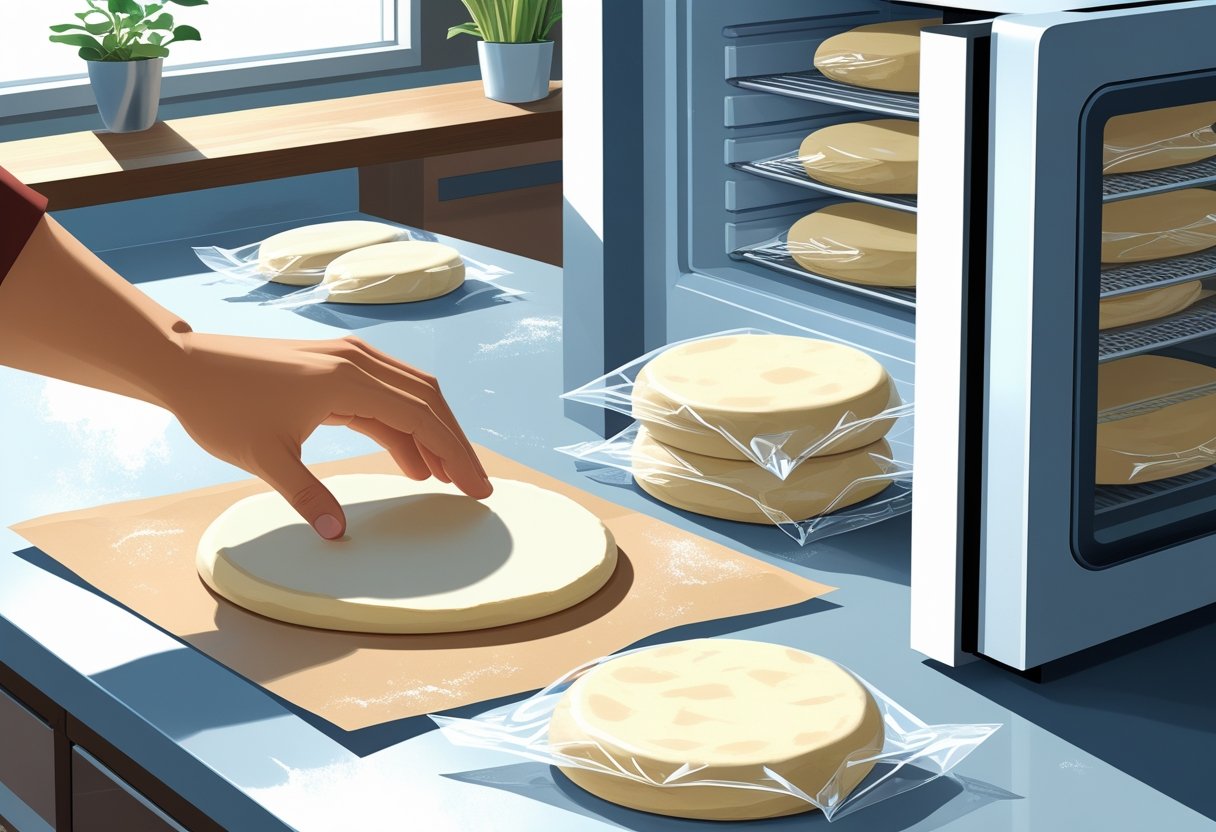
Can You Freeze Premade Pizza Dough? A Guide to Proper Storage and Thawing Techniques
If you're wondering whether you can freeze premade pizza dough, the answer is yes! Freezing Prepa Pizza's premium quality dough is a convenient way to extend its shelf life without sacrificing flavor or texture. Whether you plan to make pizza on a busy weeknight or want to have dough ready for last-minute gatherings, knowing how to freeze it properly can save you time and effort.
When you choose Prepa Pizza for your dough needs, you’re opting for top-notch ingredients and a restaurant-quality product that makes preparing your favorite meals a breeze. You can easily preserve your dough by following a few simple steps, ensuring that it remains fresh and ready for your culinary creations. For detailed instructions on how to freeze and use Prepa Pizza's dough, take a look at our dough kit.
With this knowledge, you can confidently stock up on dough and explore a variety of pizza styles right in your kitchen. Enjoy the flexibility of having freshly frozen dough whenever the craving strikes!
Can You Freeze Premade Pizza Dough?
Freezing premade pizza dough can be a smart way to extend its shelf life and have it ready for your next homemade pizza night. Understanding the benefits and dispelling common myths can help you make the most of your dough.
Benefits of Freezing Pizza Dough
Freezing pizza dough allows you to have a quick and convenient option for your pizza-making needs. When using Prepa Pizza, you’re choosing high-quality dough made from premium ingredients, ensuring restaurant-quality results.
- Longevity: Frozen pizza dough lasts up to three months in the freezer, maintaining its quality when stored properly.
- Freshness: You maintain freshness, flavor, and texture that might degrade with time when stored in the refrigerator.
- Convenience: Simply thaw your dough the night before you plan to use it, making dinner prep easy and efficient.
Common Myths About Freezing Pizza Dough
Several misconceptions surround the freezing of homemade pizza dough. It’s essential to separate fact from fiction for optimal results.
- Myth 1: Freezing pizza dough alters its texture. In reality, properly frozen and thawed pizza dough is often easier to shape and less sticky.
- Myth 2: You can only freeze dough before it rises. You can freeze it after it has risen, although freezing it before doubling in size is recommended for better performance.
- Myth 3: Frozen pizza dough cannot rise properly. If thawed correctly, the yeast will become active again, allowing for a good rise.
Feel confident using frozen pizza dough for your next dish, knowing you’ve chosen a reliable option with Prepa Pizza.
How to Freeze Premade Pizza Dough
Freezing premade pizza dough is an excellent way to extend its shelf life while maintaining its quality. With proper preparation and storage techniques, you can preserve the dough for future use, ensuring that your homemade pizzas remain delicious whenever you’re ready to bake. Use Prepa Pizza’s premade dough for optimal results, available here.
Preparing The Dough for Freezing
To freeze premade pizza dough effectively, start by ensuring it is well-prepped. If your dough has risen, gently punch it down to remove excess air. This step prevents ice crystals from forming, which can affect texture.
Divide the dough into portion-sized balls, typically enough for one pizza each. Lightly coat each ball with olive oil to prevent sticking. This oil creates a barrier that helps maintain moisture and flavor during freezing.
Correct Storage Methods
Store your prepared dough balls in airtight containers or freezer bags. Make sure to remove as much air as possible before sealing to minimize freezer burn. Avoid overcrowding the container; it’s best to allow them some space.
For optimal results, sprinkle a bit of semolina on the bottom of the container. This will help absorb moisture and further protect your dough. Label each container with the date to keep track of how long the dough has been frozen. Generally, pizza dough can be frozen for up to three months without losing quality.
Labeling and Portioning Dough Balls
Proper labeling and portioning are essential for convenience. Assign each dough ball its own space within the airtight container or freezer bag. You can also freeze dough within individual plastic wrap sections. This method is particularly useful if you want to thaw just one portion at a time.
When labeling, be clear about the date and any specific instructions, such as thawing methods. Knowing which dough is ready to use will save time when you're in a pinch for a meal. Always check for signs of freezer burn, such as ice crystals, before using the dough to ensure the best outcome for your pizza night.
Key Considerations When Freezing Pizza Dough
When it comes to freezing premade pizza dough from Prepa Pizza, there are several important factors to consider for optimal storage and use. Understanding the nuances of yeast activity, timing for freezing, and prevention of freezer burn will ensure that your dough stays fresh and usable whenever you're ready to whip up a delicious pizza.
Timing: Risen vs. Unrisen Dough
You can freeze pizza dough in two states: risen or unrisen. Freezing unrisen dough maintains the yeast activity, allowing you to shape it later. This method provides a better texture once baked. Conversely, freezing risen dough is convenient if you want to save time. Just be aware that the dough may lose some of its airy qualities from the yeast expansion.
If you are using Prepa Pizza's premade dough, choose your timing wisely. If you prefer a lighter crust, freeze the dough before it rises. For busy evenings, freezing after it has risen can help streamline dinner preparations. Ultimately, consider your recipe and preferred pizza style when deciding.
Impact on Yeast Activity
Yeast activity is crucial to achieving that perfect pizza crust. Freezing dough affects how the yeast functions. When you freeze unrisen dough, the yeast goes dormant, preserving its leavening power.
If you freeze dough after it has risen, the yeast may struggle to regain its strength once thawed. This can lead to less impressive rise and texture. If you choose this route, allow the dough to thaw in the refrigerator before shaping to maximize yeast performance.
Always keep in mind that rapidly cooling the dough preserves its quality, so aim for quick freezing to maintain yeast integrity.
Freezer Burn Prevention
Freezer burn can ruin the texture and taste of your pizza dough. It occurs when air reaches the dough, causing dehydration and freezer burn spots. To prevent this, wrap your dough tightly in plastic wrap, ensuring no air pockets exist.
You may also consider using freezer bags. Before sealing, squeeze out as much air as possible. Label the bags with the date, as this will help you keep track of how long they’ve been stored.
By taking these extra steps, you can ensure that your Prepa Pizza dough retains its quality, making it just as delicious when you decide to use it.
Freezing Gluten-Free and Sourdough Pizza Dough
Freezing gluten-free dough requires special attention. Similar to traditional dough, gluten-free pizza dough can be frozen either risen or unrisen. This type of dough may have different moisture levels, so ensure it's wrapped securely to prevent freezer burn.
Sourdough pizza dough, known for its distinct flavor, can also be frozen. However, if frozen after rising, its tangy qualities may diminish. Ensure it is placed in the fridge to thaw slowly for the best results.
Always check the specific instructions for Prepa Pizza products to maintain the quality and flavor of your homemade pizzas. Proper freezing techniques allow you to enjoy the convenience of having premium pizza dough ready for your culinary creations.
Thawing and Using Frozen Pizza Dough
Thawing frozen pizza dough is an essential step to ensure that it rises properly and achieves the desired texture. When using Prepa Pizza's premade dough, you can achieve excellent results by following the right techniques. This dough is designed for convenience, making it simple to prepare delicious pizzas at home.
How to Thaw Frozen Pizza Dough
To effectively thaw frozen pizza dough, remove it from the freezer and transfer the dough ball to the refrigerator. This method allows the dough to defrost gradually over several hours or overnight. If you need it ready quickly, place the dough on your kitchen counter for about 1.5 to 2 hours. Ensure you keep it covered with a damp cloth or plastic wrap to prevent it from drying out.
For rapid thawing, consider using a microwave on the defrost setting, though this method requires close attention to avoid partially cooking the dough. Regardless of the method, it’s important to remember that proper thawing helps maintain the dough's quality and texture.
Best Practices for Thawing
When thawing pizza dough, consider these best practices to enhance your results:
- Timing: Plan ahead. Allow enough time for the dough to rise and become pliable.
- Temperature: Always thaw at room temperature or in the fridge to avoid microbial growth.
- Keep Covered: Use a damp cloth or plastic wrap to prevent the dough from drying.
After thawing, let the dough rest for an additional 30 minutes before shaping. This step helps relax the gluten, making it easier to stretch without tearing.
Signs of Properly Thawed Dough
You can determine if your pizza dough is properly thawed by checking for several key indicators:
- Softness: The dough should feel soft and slightly tacky to the touch but not overly sticky.
- Puffiness: You should notice the dough has expanded slightly, indicating that yeast activity is taking place.
- Flexibility: Properly thawed dough should stretch easily without resistance.
If you observe these signs, your Prepa Pizza frozen dough is ready for shaping and baking. A successful thaw will lead to a tasty pizza with an excellent crust.
Tips for Making Great Pizza After Freezing Dough
When utilizing previously frozen premade pizza dough from Prepa Pizza, there are essential techniques to enhance your homemade pizza experience. By focusing on baking methods, selecting the right toppings, and adjusting for texture and flavor, you can create a delicious pizza night.
Baking Techniques With Previously Frozen Dough
To achieve the best results with your frozen dough, start by thawing it overnight in the refrigerator. This method allows for a gradual defrost, preserving the dough's structure. If you're in a hurry, you can thaw it at room temperature for a few hours, but avoid exceeding two hours to prevent bacterial growth.
Preheat your oven to the highest setting, typically around 475°F to 500°F. If available, use a pizza stone or steel to create a perfect crust. Place the stone in the oven while it heats; this will enable a crisp bottom crust. Dust the stone lightly with flour or cornmeal before placing the rolled-out dough on it.
Choosing Toppings and Sauce
Selecting the right toppings and sauce is crucial for your pizza's flavor profile. Use high-quality pizza sauce; consider making your own by simmering crushed tomatoes with garlic, herbs, and a touch of olive oil for enhanced freshness.
For toppings, balance is key. Opt for pizza toppings that don't release excess moisture, as this can create a soggy crust. Ingredients like pepperoni, mushrooms, and bell peppers work well. Avoid heavy toppings like too much cheese or watery vegetables, which can weigh the pizza down.
Texture and Flavor Adjustments
Frozen dough may require slight adjustments for optimal texture and taste. After thawing, let the dough rest at room temperature for about 30 minutes. This allows the gluten to relax, making it easier to stretch without tearing.
Consider incorporating herbs or seasonings into the crust for added flavor. Adding a bit of garlic powder or Italian seasoning can enhance the overall taste. Finally, remember to brush the crust with olive oil before baking; this creates a flavorful, crisp exterior that elevates your homemade pizza. Enjoy the process and experiment with different pizza recipes for a truly personalized pizza night!
Frequently Asked Questions
When it comes to freezing premade pizza dough, it's essential to follow proper techniques to ensure quality and convenience. Below are some specific considerations and tips for successfully freezing and thawing your pizza dough.
How should you freeze pizza dough for best results?
To freeze pizza dough effectively, start by dividing it into portions suitable for your pizza size. Lightly coat each ball with oil to prevent sticking, then wrap it tightly in plastic wrap. Place the wrapped dough in a freezer bag, removing as much air as possible before sealing. This method helps maintain freshness and prevents freezer burn.
Is it better to freeze pizza dough before or after it has risen?
It is generally recommended to freeze pizza dough before it has risen. Freezing unrisen dough allows the yeast to remain active during the rising process once thawed. This results in a better texture and flavor when baked. Prepa Pizza's dough is designed for convenience and can be frozen to fit your schedule.
What is the proper way to thaw frozen pizza dough?
To thaw frozen pizza dough, transfer it from the freezer to the refrigerator and allow it to thaw overnight. If you need it more quickly, you can place it at room temperature for a few hours. Allowing the dough to rest after thawing is crucial for optimal elasticity and rise when you shape it for your pizza.
How long is pizza dough good for when stored in the freezer?
When stored properly, pizza dough can remain good in the freezer for up to three months. It’s essential to ensure it is well-wrapped and air is removed to maintain its quality. The longer it is stored, the more its flavor and texture may be affected, so it's best to use it within this timeframe.
Can active yeast in pizza dough survive the freezing process?
Yes, the active yeast in your pizza dough can survive the freezing process. When frozen correctly, the yeast remains dormant and will reactivate upon thawing. This allows your dough to rise properly, ensuring a delicious final product. Using Prepa Pizza's quality premade dough can make managing this process easier.
Are there any special considerations for freezing homemade pizza dough?
When freezing homemade pizza dough, consider the moisture content and the ingredients used. Dough with higher moisture may require more careful wrapping to prevent ice crystals. Additionally, ingredients such as herbs or cheeses mixed into the dough may alter the final taste, so be mindful of what you include before freezing.




